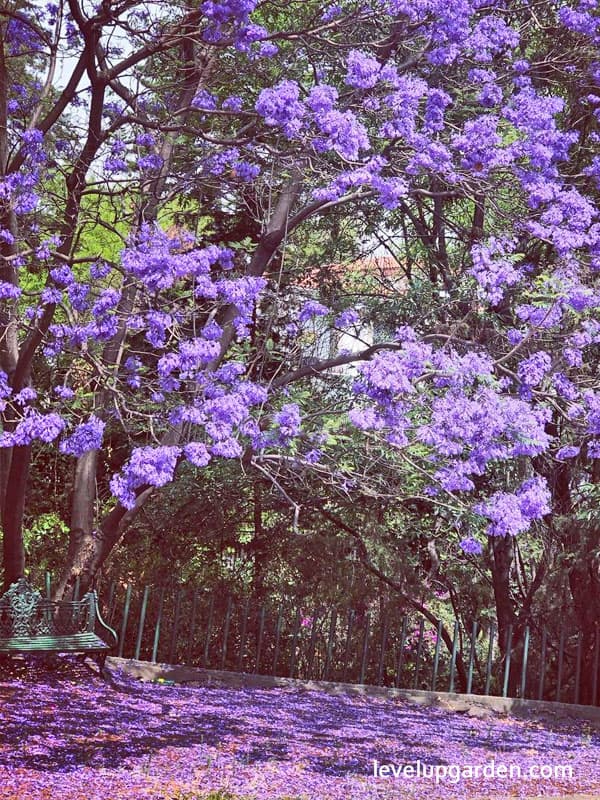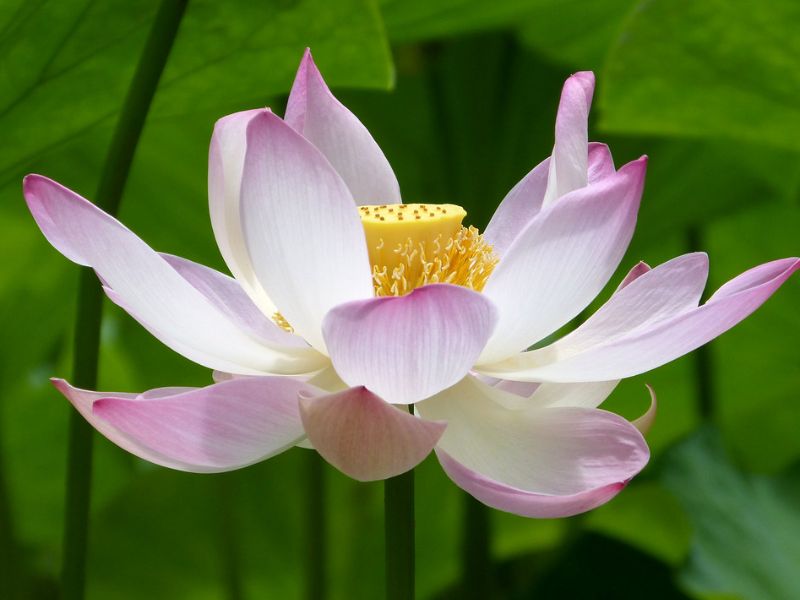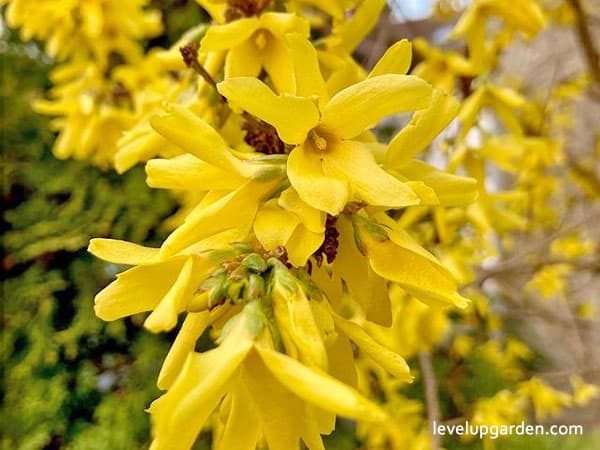Jacaranda mimosifolia, commonly known as Jacaranda, is native to Argentina and Bolivia. It is a deciduous tree, growing 25-50′ tall in its native region, is a very beautiful tree. Read on to discover if the tree fits your garden.

Jacaranda Tree (Jacaranda mimosifolia) in full bloom is truly unparalleled. The multicolored blooms of blues, lavenders, lilacs, purples, and other colors are truly spectacular. Jacarandas bloom so profusely in the spring that the canopy of the tree is covered with flowers. The best place to plant jacarandas is where the seasonal flowers have fallen and only the ground beneath the tree is colored.
Jacaranda grows best in sandy, fertile, well-drained soil with bright light. It prefers high temperatures and high humidity. Keep the soil evenly moist all year round and never allow it to dry out. Bring the pots indoors each fall before frost and overwinter in a bright, cool location. Young plants usually do not flower.
I. Jacaranda Tree Profile – An Overview of the plant
| Common Name | Jacaranda Tree, Green Ebony Tree, Black Poui, Green Ebony Tree, Blue Jacaranda, Jacaranda Tree, Sharp-Leaf Jacaranda, Jacaranda acutifolia, Jacaranda ovalifolia |
| Botanical Name | Jacaranda mimosifolia |
| Type | Tree |
| Family | Bignoniaceae |
| Native Range | Argentina, Bolivia |
| Exposure | Full Sun |
| Hardiness Zones | 10 and 11 (USDA) |
| Height | 25′ – 50′ |
| Spread | 15′ – 30′ |
| Water | Medium |
| Maintenance | Medium |
| Soil Type | Loam, Sand |
| Soil pH | Acid, Alkaline, Neutral |
| Soil Drainage | Moist but Well-Drained, Well-Drained |
| Bloom Time | June to July |
| Bloom Description | Blue-purple |
| Native Area | South America |
| Use | Flowering Tree |

II. Jacaranda Tree Appearance
- Leaf: The leaves are large, bright green, finely lobed fern-like, up to 50 cm long, both semi-evergreen and deciduous depending on the climate.
- Flower: The Jacaranda tree produces numerous clusters of lavender-blue trumpet-shaped flowers, about 20 cm across, from late spring to early summer. These flowers are very spectacular. In warmer areas, it can bloom at any time of the year. The flowers form flat mahogany-colored seeds that decorate arrangements.
III. Jacaranda Tree Growing and Care Conditions
Growth is moderate and characterized by the open nature of its branches, which are long and erect, forming a broad, umbrella-like canopy. Ideal for lawns, shade, and as a street tree. Smaller or younger trees, as well as those grown indoors, generally do not flower.

- Planting: Jacaranda grows easily in sandy, moderately fertile, evenly moist, well-drained soil in full sun (6-8 hours of sunlight per day). Avoid allowing the soil to dry out.
- Sun Exposure: Plant jacaranda trees in full sun for at least 6 to 8 hours per day for best blooms. Smaller jacarandas can do well in light shade if needed, but if they do not receive optimal sunlight, the quantity and vibrancy of the flowers may be affected.
- Soil Requirements: Jacaranda grows best in well-drained, medium sandy soils with a mildly acidic pH. It tolerates clay and loamy soils, but should not be planted in mixed soils that are considered heavy, wet, or poorly drained. Waterlogged soils carry an increased risk of root rot and mushroom root rot.
- Fertilizer: Jacaranda trees require little fertilizer, but use a balanced slow-release fertilizer such as 10-10-10 in early spring if you want to accelerate growth.
- Watering: Water the jacaranda tree once or twice a week until it is established. Once the tree is established, it will only need watering during times of extreme dryness.
- Temperature: Although some jacarandas can tolerate occasional cold days (about 20 degrees Fahrenheit), the species generally do not thrive in climates with frequent freezes. This plant prefers high temperatures and humidity but is susceptible to trunk burns in areas of constant high temperatures.
- Pruning: Young Jacaranda trees should be pruned to form one central leader (main trunk) for strength and stability. Avoid further pruning. Over-pruning may cause vertical suckers to grow and the tree to lose its shape. Seasonal pruning should be limited to removing broken, dead, or diseased branches.
- Pests and Diseases: Many trees of high ornamental value, including flowering varieties, are plagued by insects and diseases, which diminish their beauty and impair their health. Not so, however, with the highly durable jacaranda. Jacaranda mimosifolia has no serious insect or disease problems. For indoor growing, watch out for aphids and whiteflies.
IV. Jacaranda Tree Uses
The wood is light gray to whitish, straight-grained, relatively soft, and knotless. It is not difficult to dry and is often used green or wet for lathe and bowl carving.
A tree suitable only for warm climates, the jacaranda is a frost-sensitive tropical treasure that will add a majestic touch to your landscape. In cooler climates, it also makes a beautiful potted plant to decorate sunny patios, decks, and courtyards.
Even when not in bloom, jacaranda’s attractive foliage adds a special accent to your landscape design. The jacaranda’s common name, “fern tree,” is inspired by the unusual texture of its leaves. These dramatic leaves resemble the leaves of a large fern, which can grow up to 20 inches long. These leaves also resemble mimosa leaves, hence the species name “mimosifolia.” With its spectacular flowers and textured foliage, the jacaranda is a luxurious tree that combines beauty and architecture.
V. Should you buy a Jacaranda Tree? Is this the tree for your garden?
With its long purple blooms in spring and yellow flowers in fall, jacaranda is the star of the show in all seasons. Fern-like foliage adds volume to its bold, dramatic silhouette, creating a landscape unlike any other.

The deep hues of spring blooms are breathtaking. Before the leaves grow, the tree is covered in a sea of lavender, creating a striking appearance. But in addition to its unparalleled beauty, Jacaranda is fast-growing and drought-tolerant, adapting well to harsh conditions.
The jacaranda tree is strong in its beauty. Its strong trunk and thick branches are strong and supple, supporting beautiful flowers and golden foliage. It is a sturdy tree, standing tall and strong, and can grow in a variety of soils.
What do you think about this tree? Is this the tree you are looking for?
VI. FAQs
Where do jacaranda trees grow best?
Jacaranda is well suited for warmer areas and large outdoor spaces in USDA Hardiness Zones 10 and 11.
How big does a jacaranda tree grow?
Jacaranda can reach 12 to 15 meters over 20 years under ideal conditions, but in most cases, it grows to less than 8 meters.
How long does it take to grow a jacaranda tree?
Jacaranda trees have an average lifespan of 50 years. Of course, they can grow much longer; some can last up to 200 years. They mature in about 20 years and can re-grow even if damaged by fresh seed fall.







